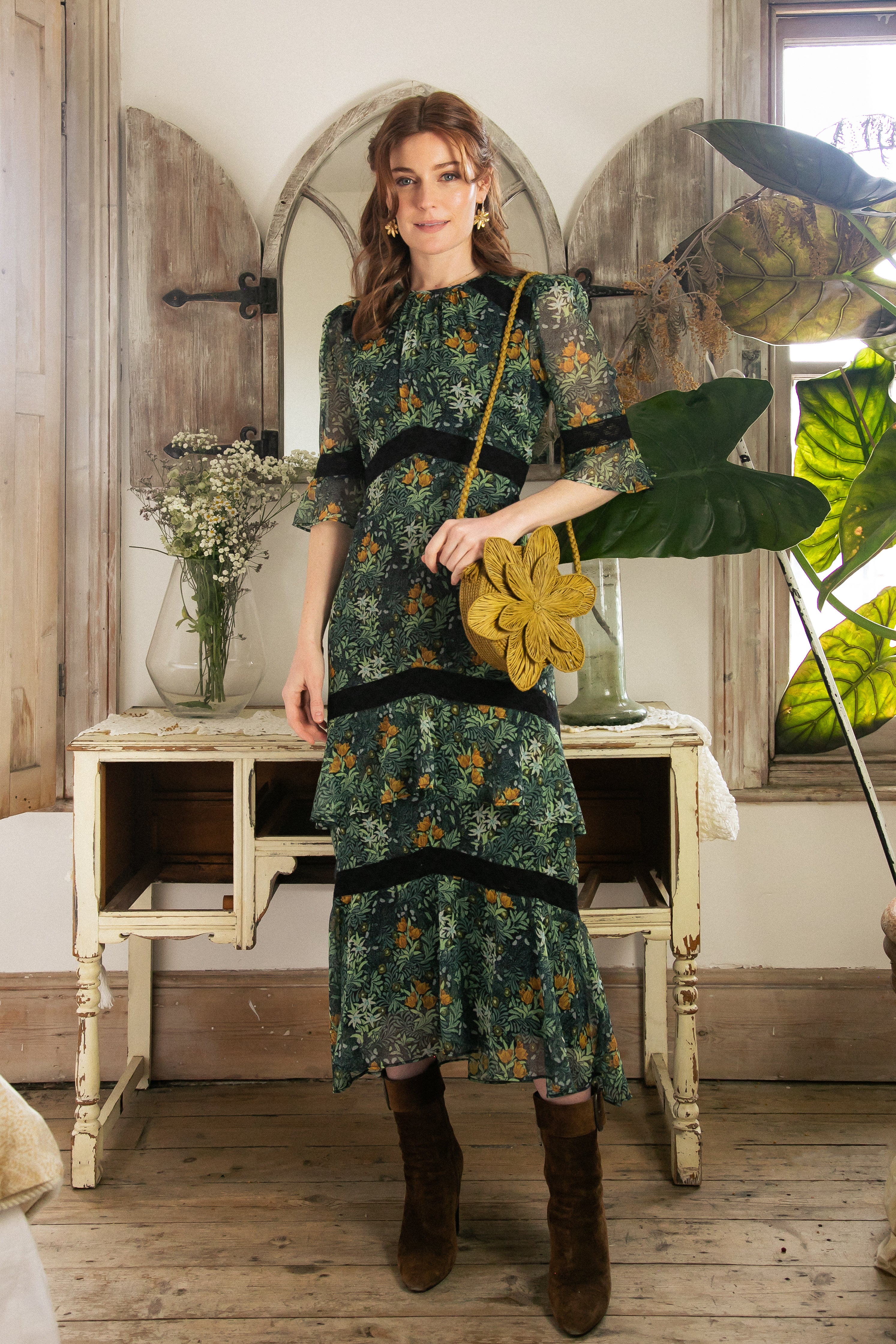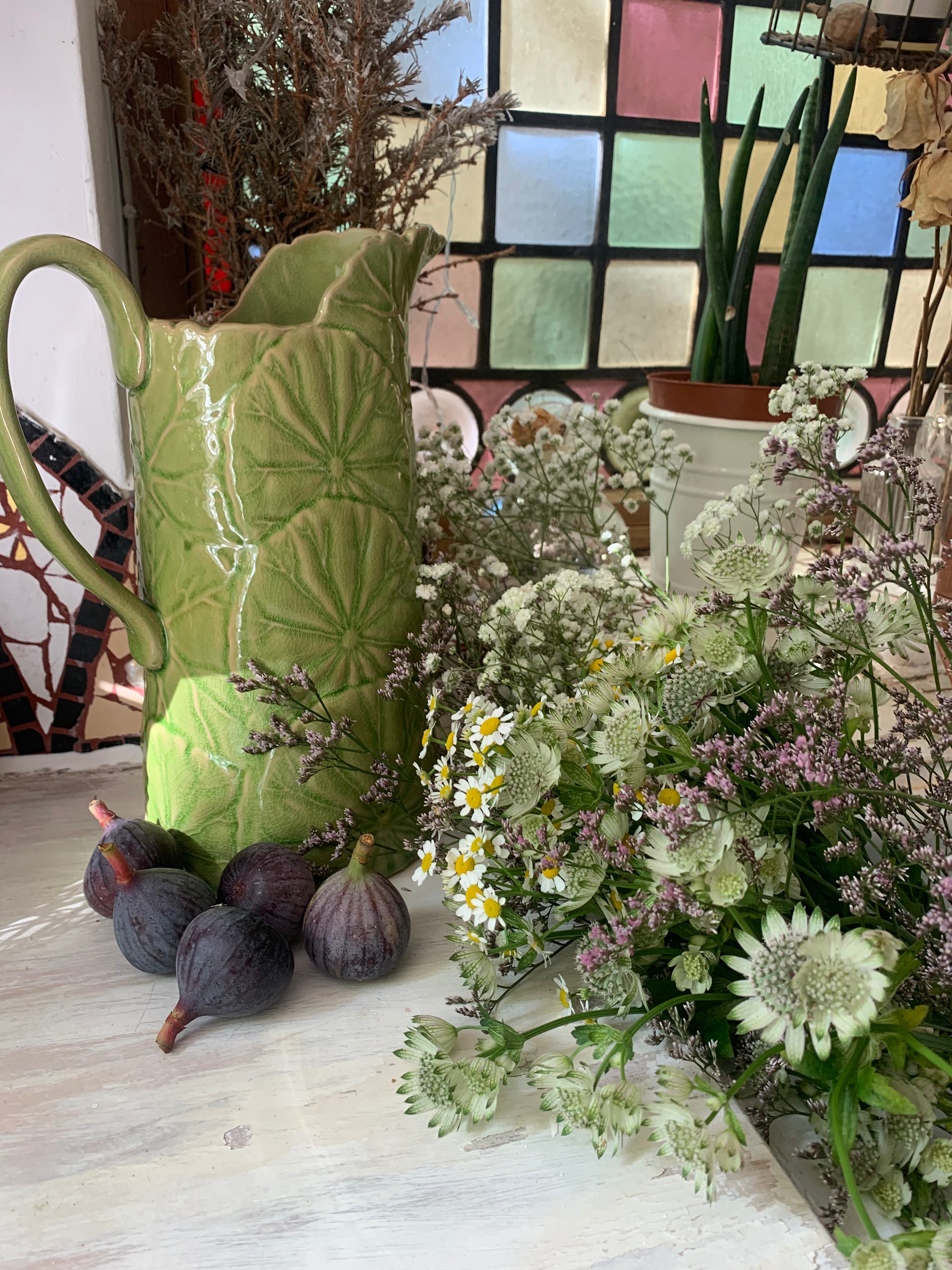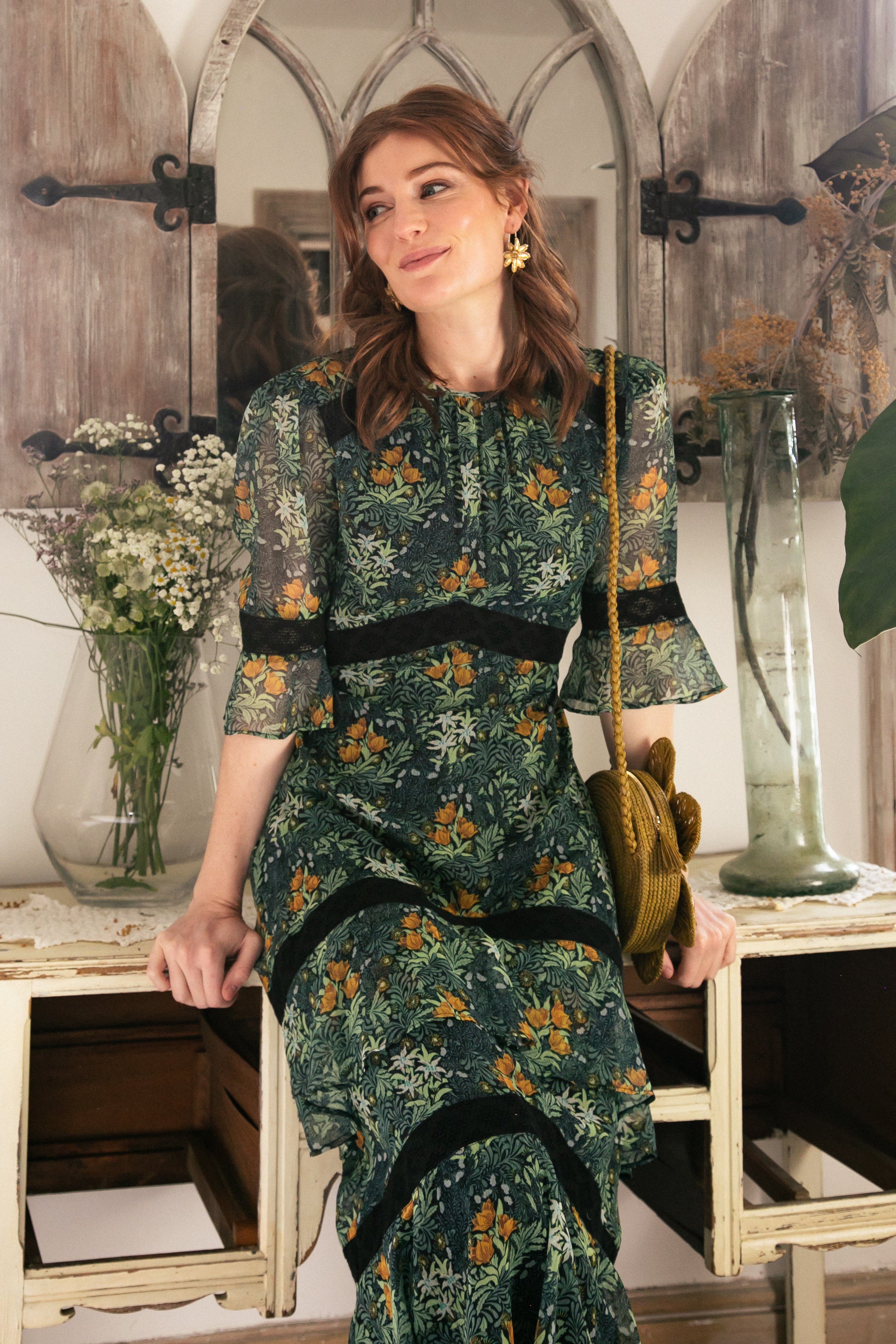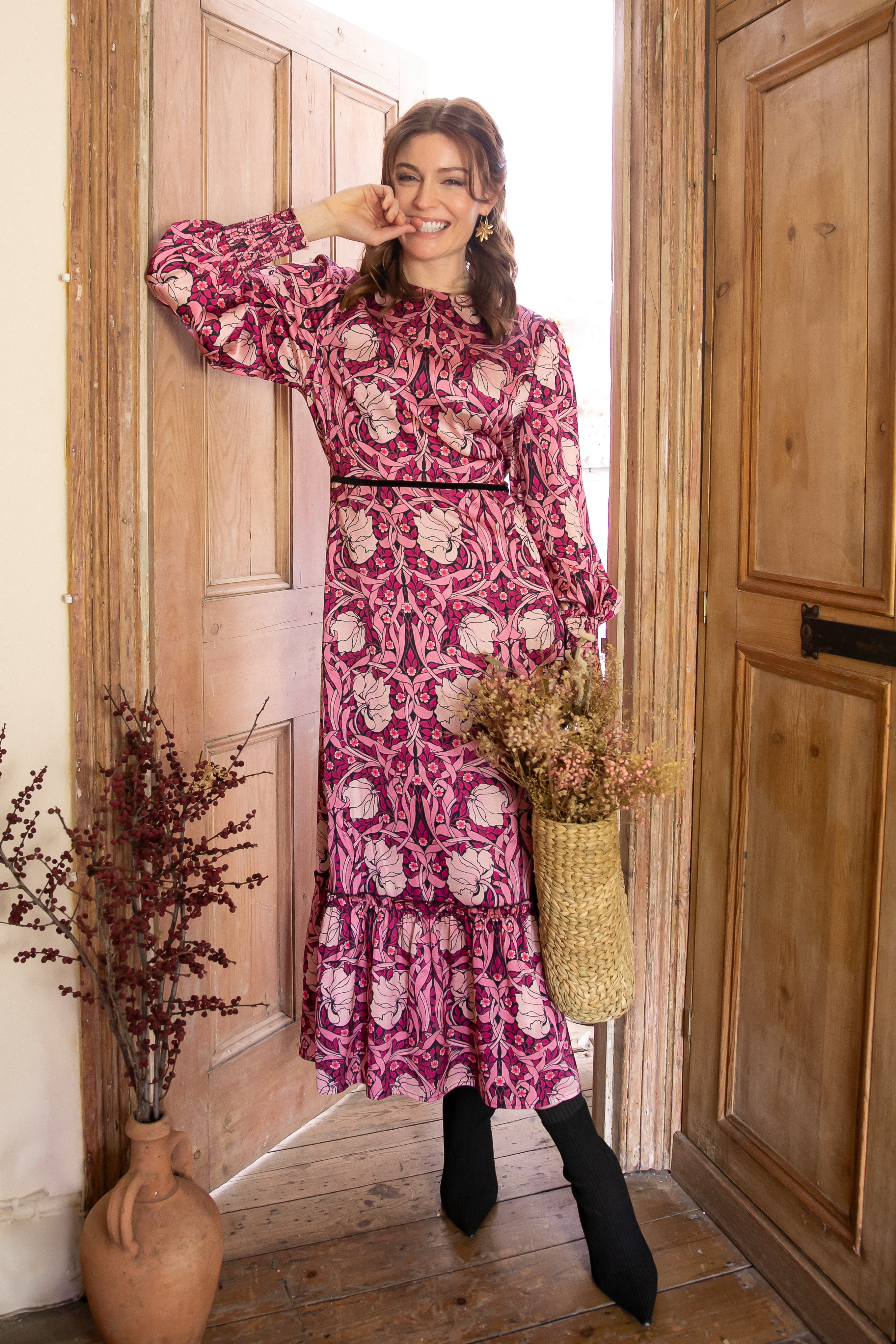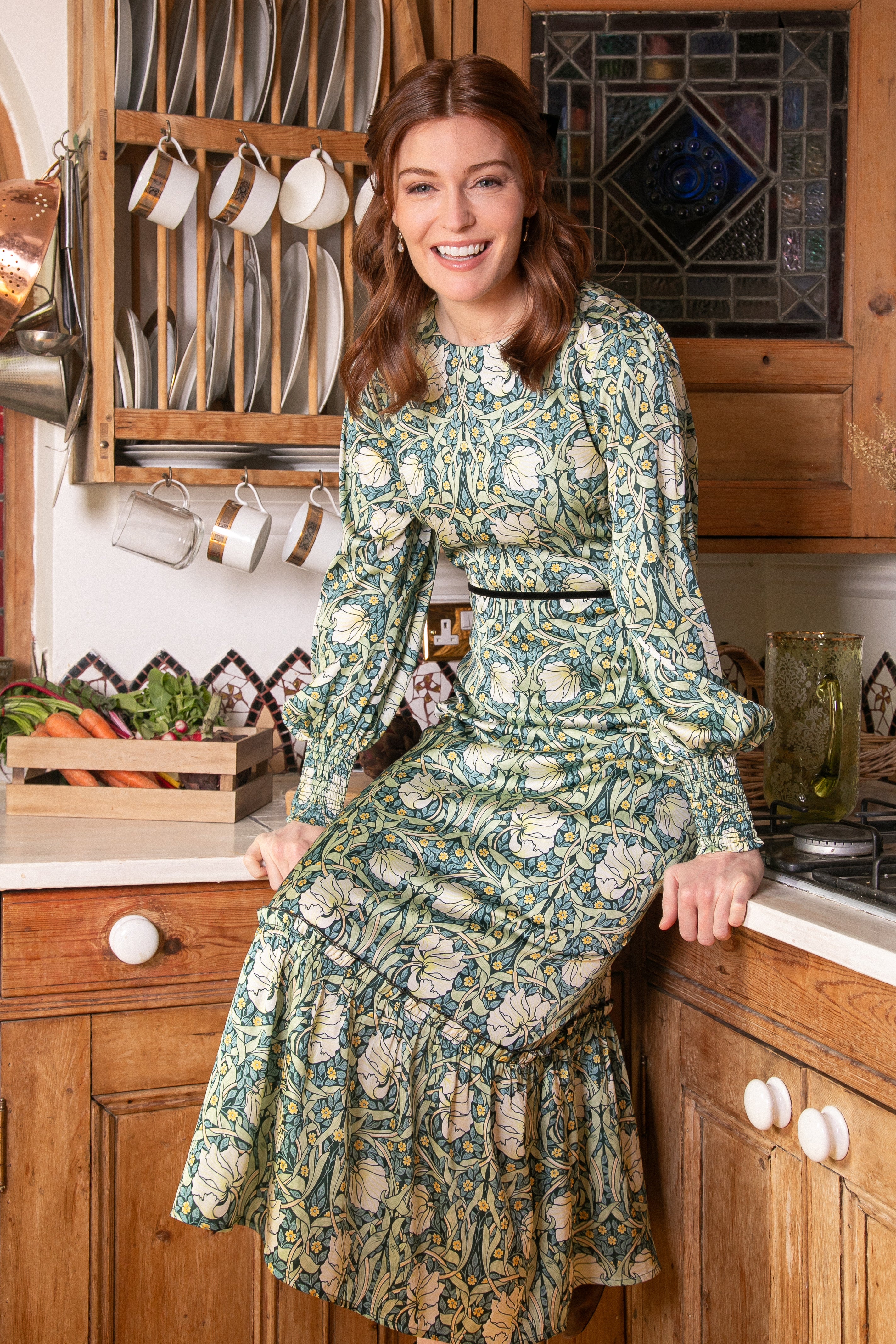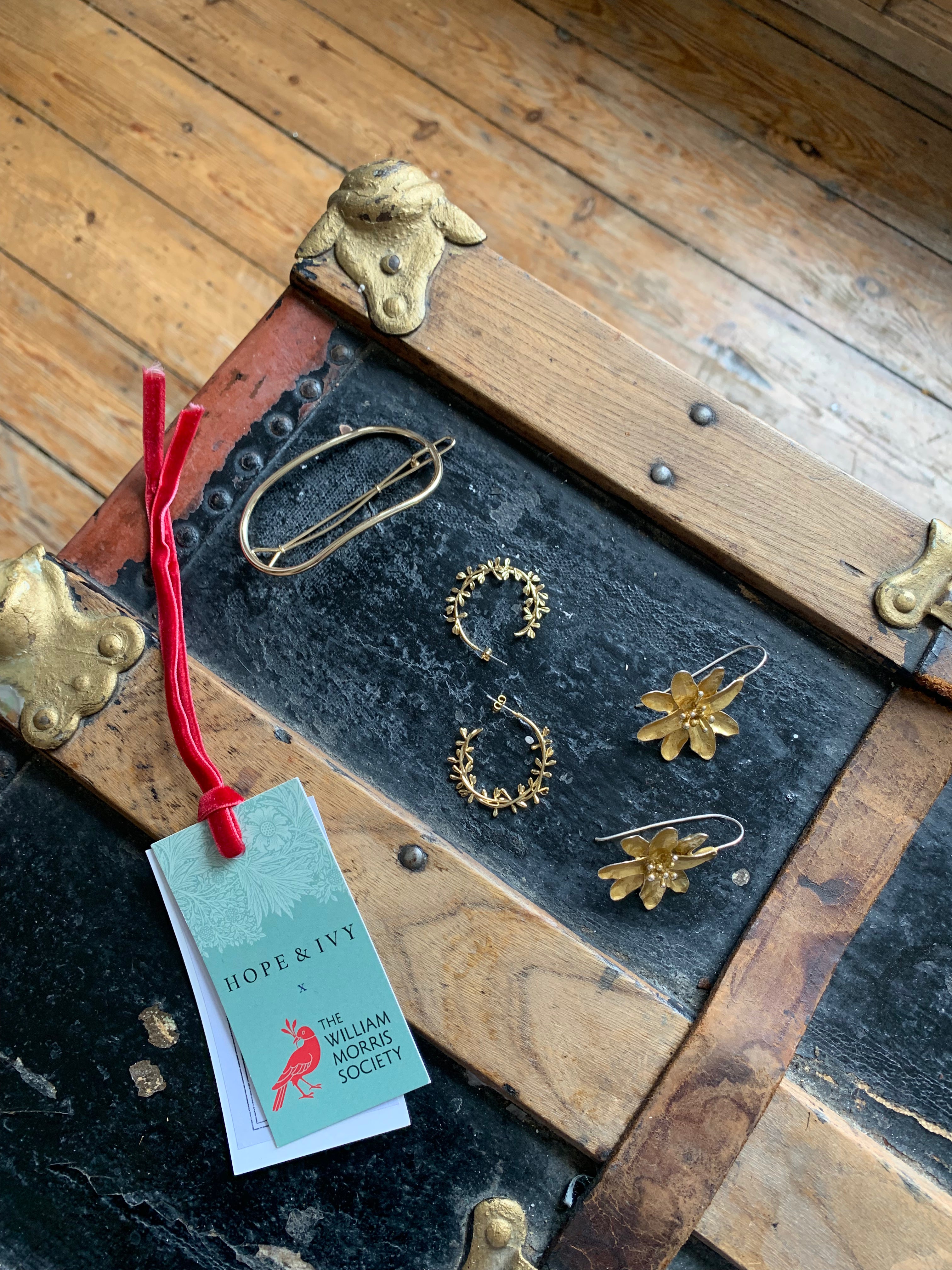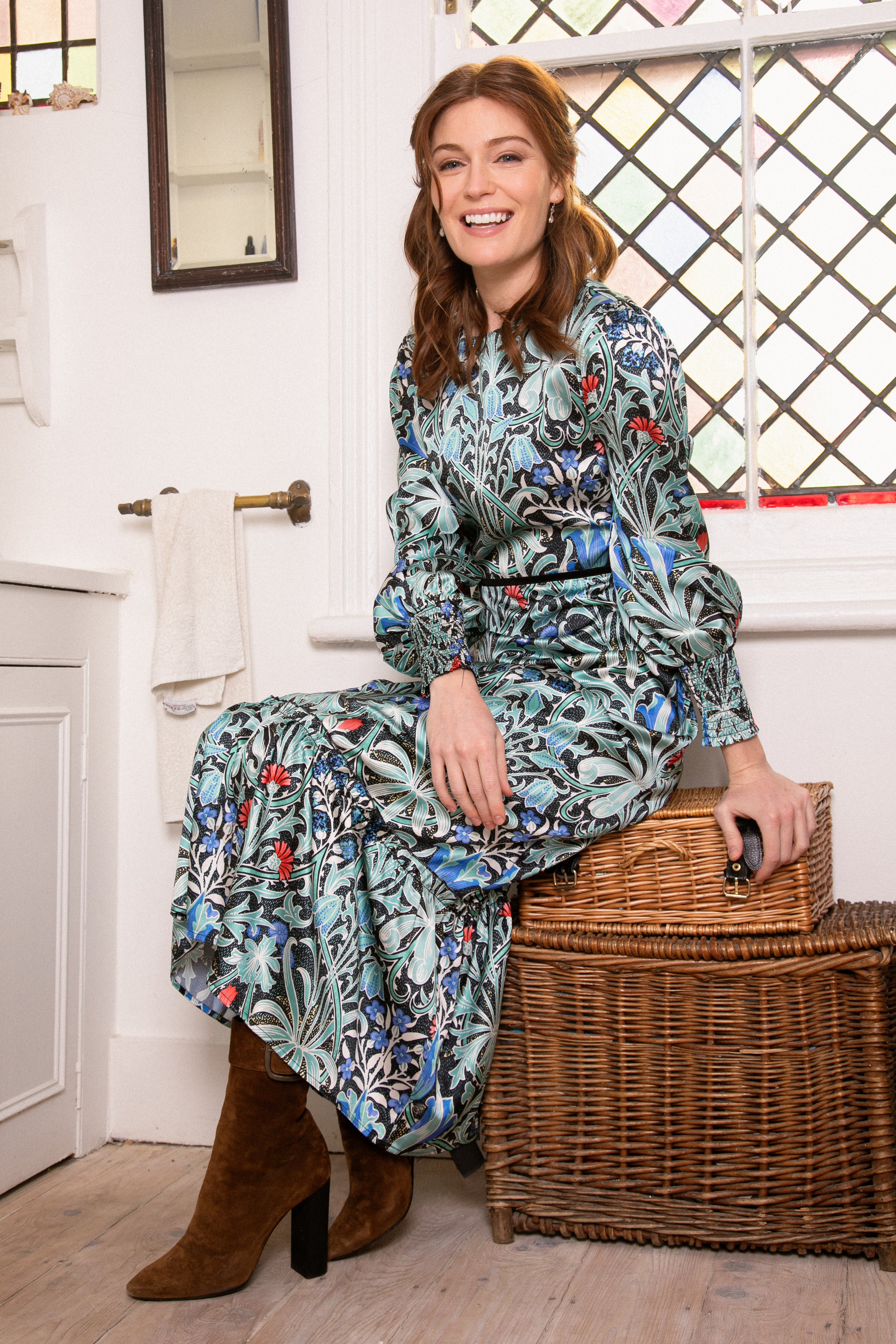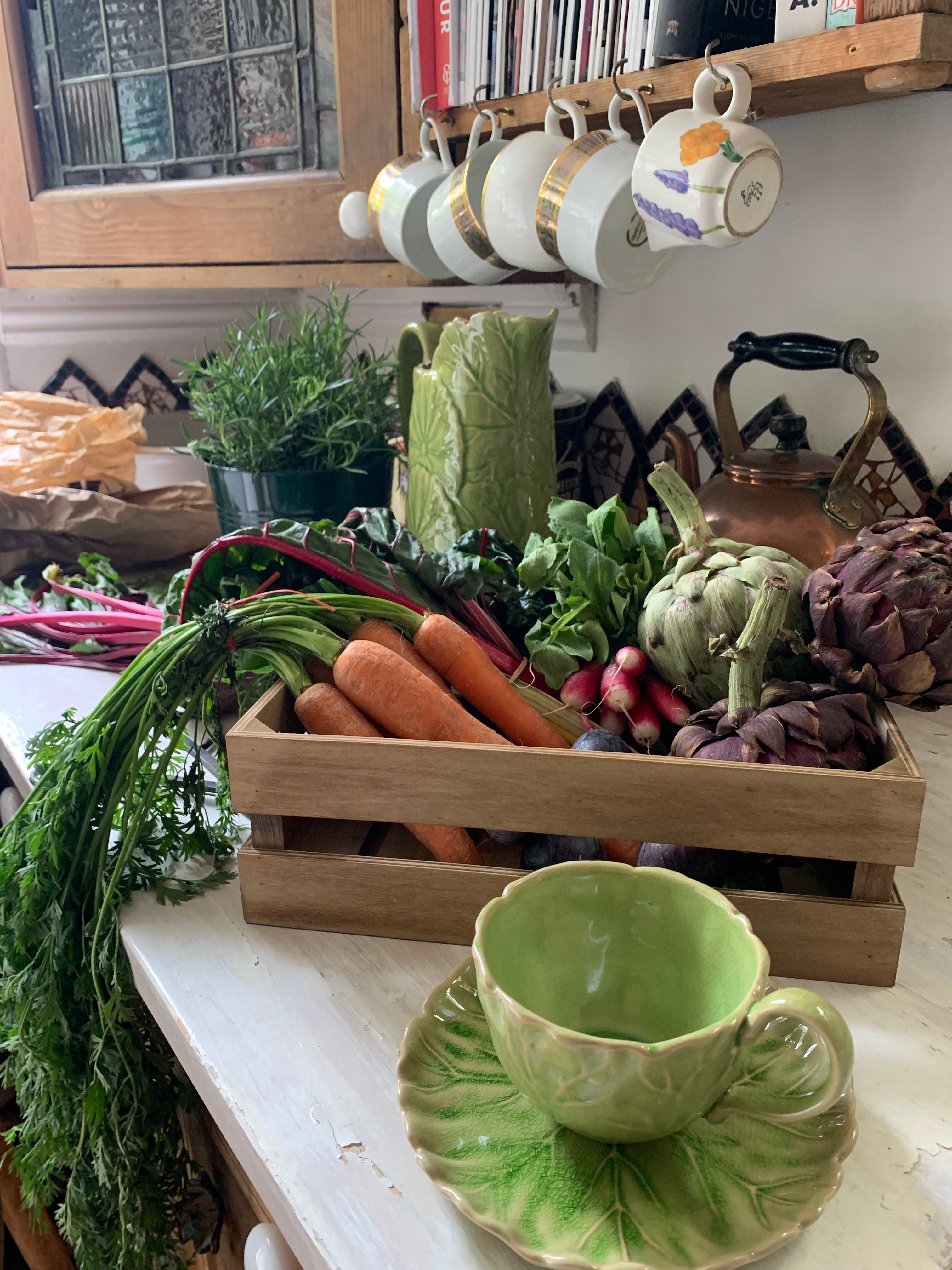Exploring our William Morris Society Collaboration
The Story Behind the Prints
Discover the prints behind our collection with The William Morris Society
Hope & Ivy is proud to collaborate for a second year with The William Morris Society, creating an exclusive collection of beautifully patterned dresses in celebration of the work of the revolutionary artist, writer, and textile designer. William Morris was a prominent figure in the British Arts & Crafts movement, a fervent advocate for the revival of traditional textile arts and, like us, an avid nature lover. Morris found endless inspiration in the natural world, so we thought we’d delve into the storytelling behind each of the prints in our latest collection.
Bower
Trimmed with lace, The Bower is decorated with the intricate William Morris print of the same name. Defined as a pleasant, shady place below trees or climbing plants, a bower offers a leafy shelter in a garden or forest – a feeling that’s perfectly portrayed in the richly intricate assembly of flowers and foliage.
The densely packed pattern was designed in 1877 by William Morris himself, taking inspiration from medieval woodcuts and paying homage to the woodland walks he so enjoyed. We love how the dark background to the depicted floral wonderland ensures that The Bower dress is a particularly versatile design, perfect for wearing with black strappy sandals in the warmer months before switching to tights and boots when it cools.
Pimpernel
We love William Morris’s iconic Pimpernel print so much that we’ve used it in different colourways across four of the dresses in our collaborative collection. A classic repeated floral that’s typical of Morris, it was created in 1876 during one of his most prolific periods of wallpaper production– when the loose spontaneity of his earlier patterns gave way to a strong symmetrical formality.
The design is formed of sensual tulips and scrolling willow leaves, punctuated by the small pimpernel flowers that give it its name. Morris used the paper to decorate the dining room at his own beloved Kelmscott House in Hammersmith, and it also covers the walls of the billiard room at Wightwick Manor in the West Midlands.
Woodland Weeds
Decorating The Amelia, the Woodland Weeds pattern depicts a colourful mélange of ‘millefleurs' – meaning many different small flowers and plants. First printed in 1905, the print is attributed to Morris & Co. head designer John Henry Dearle.
The pattern draws from the ancient Medieval designs that Morris loved, but also exhibits a late Victorian repeating scroll form and is unusually symmetrical and perpendicular for a Morris & Co. design. It was often shown with a green background to create the impression of mingling flora and fauna sprouting through grass.
Compton
The Compton, which decorates our dress of the same name, was originally created in 1896 as a block-printed wallpaper for Compton Hall near Wolverhampton. It was commissioned by well-known patron of the arts Laurence W. Hodson and was a collaborative creation produced by Morris & Co. under the hand of John Henry Dearle.
A boldly beautiful melange of flowers and foliage, the original design required two sets of wood blocks to print all 28 colours. May Morris says in ‘The Collected Works of William Morris’ that this was the very last print design her father oversaw before his death that same year – his physician gave the prolific creative’s cause of death as ‘simply being William Morris, and having done more work than most ten men.’
Bird
William Morris also incorporated fauna, as well as flora, into his iconic designs– resulting in patterns like the Strawberry Thief, Brother Rabbit and the beautiful Bird print that decorates our The Emery dress.
Originally created in 1878 to adorn the walls of the drawing room in his family home, Kelmscott House, the decorative design features intricately detailed depictions of paired birds alternating between perched and in-flight. The bright pops of colourful flowers amongst lush foliage pay tribute to the enchanting natural world that captured Morris's heart. The design continued to be made after Morris & Co. established textile production at Merton Abbey in 1881, and Morris’s friend and neighbour – the noted typographer Sir Emery Walker – also decorated his dining room with a Bird tapestry.
As ardent fans of flowers and foliage here at Hope & Ivy, it was an honour for us to work with the beautiful prints that are archived by The William Morris Society. We’ve loved being able to breathe new life into these iconic patterns and we hope you’ll enjoy continuing the storytelling tradition while you’re wearing these stunning dresses.

